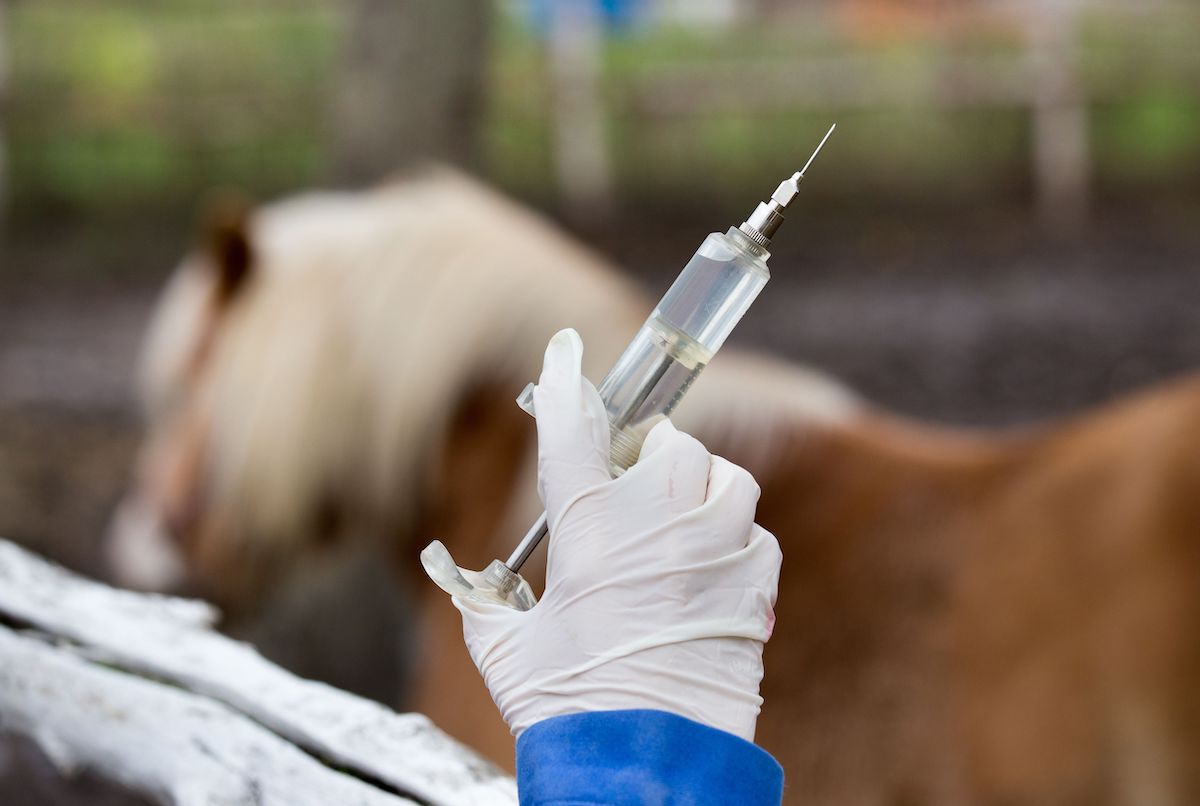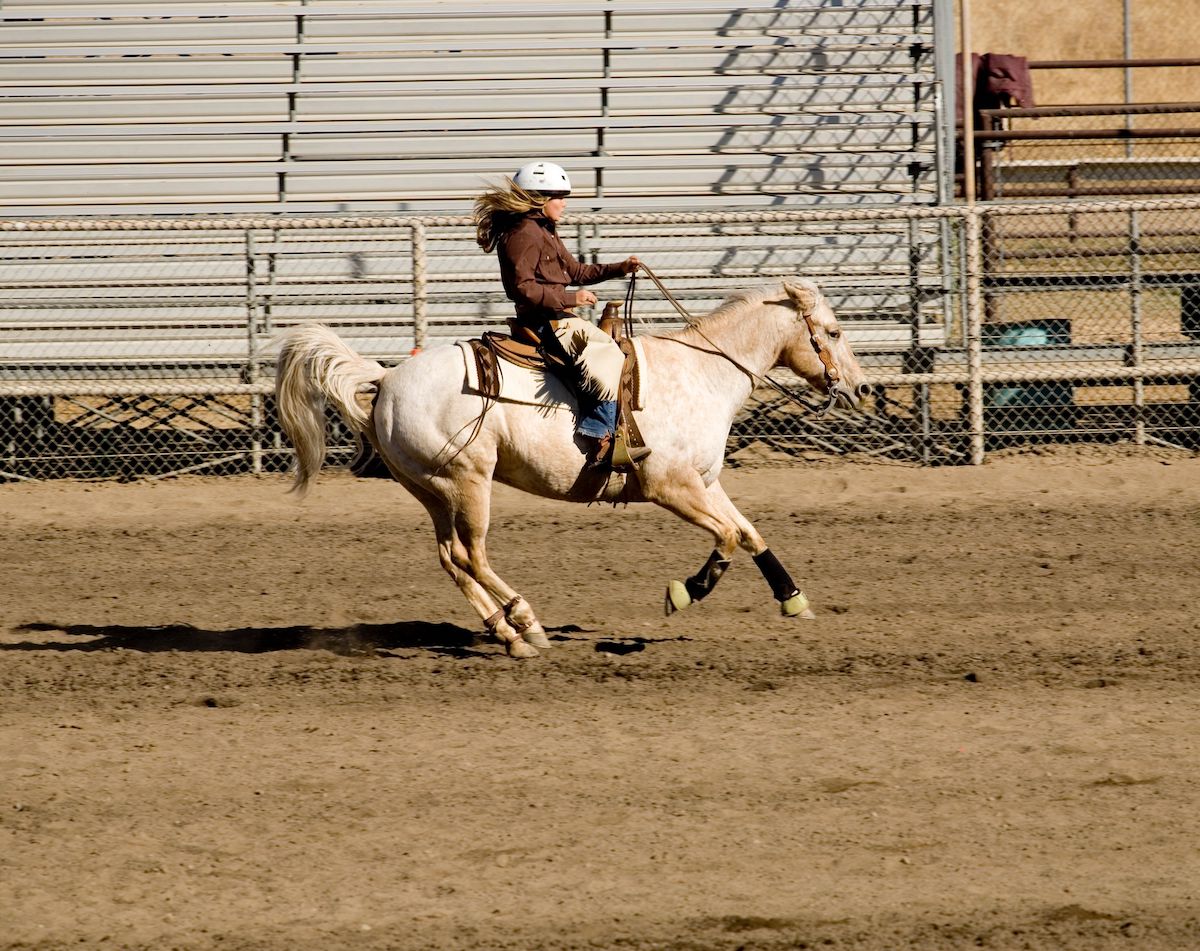What is Equine Protozoal Myeloencephalitis?
What is EPM in horses?
EPM equine is a debilitating and often deadly disease. It’s caused by a protozoan parasite, Sarcocystis neurona, which infects its host’s central nervous system (CNS). The clinical signs vary and can range from mild to severe depending on the horse’s immune response to infection.
While many EPM treatment options are available, none have proven to be 100% effective for every case. In addition, it can take months or even years for a horse to recover from this debilitating disease.
The best way to prevent this opossum disease in horses is through vaccination and parasite control measures such as deworming medications and fly control products. However, these methods alone are insufficient to eliminate the risk of infection with Sarcocystis neurona protozoa (the causative agent).
For example, many infected horses may never show clinical signs because they live on farms with other animals who act as carriers without exhibiting symptoms themselves.
Today we’ll cover everything you need to know about this disease so you can keep your horse healthy! We will help you understand the symptoms of EPM in horses, how it’s transmitted, and how to prevent it. You’ll also find links to some great resources for more information on EPM.
Let’s dive in.
Known Symptoms of EPM in Horses
It can be hard to recognize the symptoms of equine protozoal myeloencephalitis (EPM), especially if you’re not a horse owner. The first symptoms are often subtle and vague, so it’s hard to recognize them as being related to EPM.
If you notice any of these signs of EPM in horses, talk with your veterinarian about testing for EPM or Equine Protozoal Myeloencephalitis (EPM):
- Head tossing
- Toe dragging
- Unusual sweating
- Frequent bucking
- Muscle atrophy
- Fever
- Lack of appetite
- Depression
- Difficulty walking (or even standing)
- Drooping ears, eyes, or lips
- Difficulty in swallowing
- Seizures or collapse
- Symptoms of head disease—swollen face, difficulty chewing, paralysis of hind limbs, stiff gait
- Poor balance
- Asymmetric stride length
- Pelvic sway
Early diagnosis of EPM in horses allows treatment before the disease gets worse.

Associated Factors That Can Progress Equine Protozoal Myeloencephalitis
Several factors can lead to an increase in the severity of symptoms and speed up the progression of EPM. These include:
- Gut acidity
- Body temperatures
- Immune suppression
- Calcium depletion
Let’s take a closer look at each one.
Gut acidity is increased when horses eat foods high in carbohydrates or sugar content, such as grains and molasses.
This causes an increase in lactic acid production which leads to decreased pH levels within the digestive tract. When this occurs, protozoan cysts can start to reproduce more rapidly, leading to more severe cases of EPM over time.
Body temperature also plays a role. For example, suppose your horse has elevated body temperatures due to fever or other illnesses. In that case, they will be less able to fight off infection from parasites like Sarcocystis neurona (the cause of EPM).
The same goes for immune suppression caused by stressors such as travel or competition, which can lower your horse’s ability to fight off infections, including those caused by protozoal parasites like Sarcocystis neurona.
Calcium depletion also contributes because it decreases bone density making them weaker and more susceptible to falls.
It’s essential to know how these factors play into the development of this disease so you can prevent future outbreaks from occurring on your farm or ranch.
How is EPM in Equines Diagnosed?
Veterinarians diagnose EPM by checking the cerebrospinal fluid (CSF) of the horse. The test typically requires the veterinarian to tap fluid from the animal’s sac surrounding their brain and spinal cord, called the meninges.
This would generally require sedating and then inserting a needle into this space of protective tissue. But, tapping is an alternative method that can be performed by hand. The CSF should then be examined for evidence of inflammation, such as white blood cells or elevated protein levels.
Cytology tests may also be performed on samples if any factors suggest infection with parasites like protozoa or trypanosomes. In general, however, these tests do not have a high enough sensitivity threshold to detect early infections.
Treatment Options Against EPM in Horses
Is EPM in horses curable?
EPM treatment in horses is either a six-month course of antibiotic and antiprotozoal or a 28-day course of ponazuril. Ponazuril is the only FDA-approved medication to treat this disease.
Horses may need supportive care depending on their condition. General support such as good nutrition and hydration supplements can help recover after an infection has been treated.
Results of EPM Treatment in Horses
It’s best to start EPM medication as soon as possible. Around 60-70% of horses aggressively treated for the disease will show significant or complete recovery, and many can return to normal activity.
Here is some information you should know about EPM treatment:
- Anti-inflammatory medications may be prescribed to ease the symptoms and reactions that occur during treatment.
- Vitamin E supplementation is often recommended as a way to help heal nervous tissue.
- Although the average treatment is one month, it can be as long as three to six months if combinations of medications are used.
- Although the risk of complications is low, treatments may harm stallion fertility. They can also pose certain risks to the unborn foals.
- Treating EPM in horses can be expensive.
- While most horses respond positively to therapy, some may experience a relapse. About 10-20% of horses may experience a relapse after treatment.
- Periodically taking blood samples while treating a horse can help monitor potential side effects such as low white blood cell count, low platelet count, and anemia.
- Symptoms such as acute diarrhea should be monitored particularly carefully because they are adverse side effects caused by certain medications used during this disease’s treatment.
- Antifolate drugs used to treat EPM can sometimes cause a decrease in the blood cells. So it is crucial for horse owners and veterinarians to monitor anemia during EPM treatment.
Can This Debilitating Disease be Prevented?
There are three main ways to prevent EPM in horses:
- Avoid risky exposure
- Vaccinate
- Treat aggressively if it does occur
Avoid Risky Exposure
Trail riding in an area with known cases of EPM is risky, for example. It’s best to avoid areas known to have been previously contaminated with horses that had the disease. It’s also crucial to see your veterinarian before going on multi-day excursions into potentially arthritic places like national parks. This way, you’ll be able to learn about any risks involved beforehand.
EPM Vaccination
Vaccinating your horse will protect them from the disease and keep them healthy. It’s as simple as that.
There are many benefits of vaccinating your horse against EPM. For example:
- They won’t suffer from any long-term effects or complications associated with the disease, such as seizures or paralysis.
- They won’t develop anemia which can cause fatigue and weight loss over time.
- They won’t need to go through expensive treatment options like IV fluids and anti-inflammatory medications for their symptoms either.

Treat EPM Aggressively if it Does Occur
The first step toward successful treatment is early diagnosis. Once your veterinarian confirms the presence of an active case of EPM, we recommend starting treatment as soon as possible. This will help reduce damage to the central nervous system caused by this disease and improve chances for recovery.
EPM in Horses and The Prognosis
If your horse has been diagnosed with EPM, it’s essential to know that there is hope for recovery. With the proper treatment and care, horses can recover from this disease and live happy lives.
Only about half of horses will improve after receiving treatment. The other half may either stay the same or get worse, depending on how severe their symptoms are, to begin with.
With very mild signs, a horse might be able to return into full athletic use, but those with more severe symptoms might never become safe enough for riding again.

9 Facts About Opossum Disease in Horses
EPM is a widespread disease that has been troubling horses for years. It’s still hard to diagnose and difficult to tell apart from other neurological disorders, but here are nine facts about this devastating illness:
- EPM is caused by either of the two parasites, Sarcocystis neurona or Neospora hughesi. Most studies discuss the former because there is little available information about the latter at this time.
- Many horses are exposed to Sarcocystis neurona, though not all become infected. The immune system is usually able to fight off the parasite without symptoms of active infection.
- When horses eat opossum feces containing Sarcocystis neurona, the parasite migrates and takes residence in different parts of the central nervous system (CNS). This makes it difficult to predict which clinical signs a horse will show once it has been infected.
- The clinical signs of EPM are varied and include:
- Weakness
- Head tilt
- Spasticity
- Depression
- Incoordination
- Facial nerve paralysis
- Decreased reflexes
- Upper airway dysfunction
- Difficulty swallowing
- Seizures
- The definitive EPM in horses diagnosis is achieved through necropsy. This means that an equine veterinarian must perform complete examinations on the brain and spinal cord tissue to visualize the parasite within.
- EPM horses should be treated using any of three FDA-approved medications.
- Other treatments include decoquinate and DMSO. In addition, they have compounded medications that can help reduce inflammation in the intestinal tract, a common cause of diarrhea in horses with EPM.
- Vitamin E, a natural antioxidant, is recommended for horses with EPM because it can help prevent secondary oxidative damage.
- Horses treated for EPM may continue to show signs of neurological problems due to permanent CNS damage caused by the parasite.
Is EPM in Horses Contagious to Other Horses and Humans?
Fears have been raised that EPM in horses can be contagious to people and other living animals. However, the current evidence does not support this theory because there is no direct biological evidence that the disease can make it into another animal species.
Despite these claims, scientists are still unsure because of how closely related horses and humans are biological. But as of now, they do not believe EPM is transmittable to humans or other animals such as cows, pigs, or chickens.
Additionally, because a horse cannot transmit diseases to an entire herd’s population at once as mosquitos do with West Nile virus, for example, the chances of one person contracting the illness from a given horse are meager.
What Should I Do If I Suspect My Horse Has EPM?
The first step is to call your veterinarian. EPM can have many causes, and you need an expert to identify the cause and then formulate a treatment plan specific for your horse.
The vet will likely do blood work and urinalysis to detect antibodies associated with EPM before diagnosing the animal with this condition.
Key Takeaways
EPM in horses is a neurological disease, and it’s not contagious. The longer the horse has been infected, the higher chance of them having symptoms. Horses are at risk if their immune system isn’t strong enough to fight off infection.
There are many ways for you as an owner to protect your horses from this devastating disease, including:
- Vaccinations.
- Good feed choices.
- Good exercise patterns.
- Cleaning equipment properly after use with bleach water or disinfectant solutions.
- Making sure that everyone who handles your horses does so in clean clothing.
For more information on how to take care of your equine health concerns, please visit our website.
![EPM in Horses [Equine Protozoal Myeloencephalitis]](https://thehorsesguide.com/wp-content/uploads/2021/12/EPM-in-Horses-Equine-Protozoal-Myeloencephalitis.jpg)